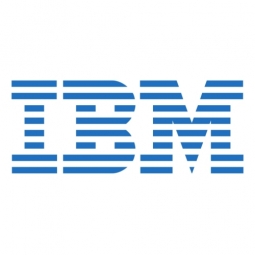Customer Company Size
Large Corporate
Region
- Asia
Country
- Afghanistan
Product
- IBM i2 Analyst’s Notebook
Tech Stack
- Data Analysis
Implementation Scale
- Enterprise-wide Deployment
Impact Metrics
- Digital Expertise
- Productivity Improvements
Technology Category
- Analytics & Modeling - Data Mining
Applicable Industries
- National Security & Defense
Applicable Functions
- Logistics & Transportation
Use Cases
- Predictive Maintenance
Services
- Data Science Services
About The Customer
The customer in this case study is a specialized military team stationed in Helmand Province, Afghanistan. The team is tasked with collecting, analyzing, and disseminating large volumes of data used to develop human terrain intelligence in the battle against insurgents. The team comprises five companies with subunits occupying their own areas of operation. The large geographical area involved encompasses a wide and varied population amongst whom the insurgents can operate. Each subunit passes data up the intelligence chain for fusion with other data and further exploitation.
The Challenge
The military team, stationed in Helmand Province, Afghanistan, was tasked with collecting, analyzing, and disseminating large volumes of data used to develop human terrain intelligence in the battle against insurgents. The team comprised five companies with subunits occupying their own areas of operation. The large geographical area involved encompasses a wide and varied population amongst whom the insurgents can operate. Each subunit passes data up the intelligence chain for fusion with other data and further exploitation. Previous methods of channeled data did not facilitate the rapid fusion of intelligence needed to drive intelligence-led operations. The team needed a solution that would ingest large volumes of complex data for analysis, minimize duplicate efforts, and maximize corroboration.
The Solution
The military team implemented IBM i2 Analyst’s Notebook software in its quest to best take advantage of gathered intelligence in its counterinsurgency efforts. Each subunit enters its gathered intelligence, contributing to the hundreds of rows of data that the overall team inputs daily for deeper analysis and exploitation. The i2 Analyst’s Notebook software helps the team fuse this data, from multiple sources in varied formats, for fast analysis and exploitation. The i2 Analyst’s Notebook software helps the team convert the disparate data into a cohesive intelligence picture, reducing duplicate efforts and facilitating information corroboration and sharing. The implementation of the i2 Analyst’s Notebook software has helped the team identify patterns that may have otherwise gone unnoticed, allowing them to recognize and deliberately disrupt insurgent activity.
Operational Impact

Case Study missing?
Start adding your own!
Register with your work email and create a new case study profile for your business.
Related Case Studies.

Case Study
Data Capture for Afghanistan Forces
Electronic equipments on the field of Afghanistan provided information on the status of the vehicle and to identify potential threats surrounding it to the British Force. The monitoring and interpretation of this data requires robust and sophisticated digitization for data capture and communication.
Case Study
Enhancing Security and Compliance in Remitly's Global Money Transfer Service with Fastly
Remitly, an online remittance service, was faced with the challenge of securing its proprietary global transfer network. The company needed a security solution that could meet PCI requirements and protect customers' sensitive transactions through its mobile application. The solution had to be capable of defending against new and emerging attack types without impacting performance. Remitly also had to deal with irregular traffic patterns, such as a sudden spike in account transfers from a small network segment on the Pacific coastline of South America. The company needed to determine in real time whether such traffic indicated an attack or valid requests. A traditional web application firewall (WAF) would not be able to distinguish this traffic, potentially leading to customer frustration if the IP was blacklisted.

Case Study
Major Aerospace Company Automates Asset Management
The O&M division of an aerospace and global security company was using spreadsheets to manually track more than 3,000 assets assigned to students and staff. Maintaining audit trails for this high volume of equipment became increasingly time-consuming and challenging. The chore involved knowing precisely what equipment was on hand, what had been issued, its location and the name of the custodial owner of each item. Every aspect of this task was carried owner of each item. Every aspect of this task was carried out by individuals with spreadsheets. Manually documenting the full lifecycle of each asset added to the burden. This included tracking maintenance requirements and records, incidents and damages, repairs, calibrations, depreciation, and end-of-life data.

Case Study
Securing a Large Data Center in the EMEA Region: An IoT Case Study
A leading data-center operator in the EMEA region, with multiple facilities spanning over 25,000 square meters, faced significant security challenges. The operator experienced interruptions in their internal IT network due to unsupervised work of third-party technicians. Despite having a high-end building control system that provided 24x7 monitoring and control to all the building’s infrastructure, the data center was vulnerable from a cyber perspective as it was connected to the IT network infrastructure. The operator launched an urgent OT cyber security project that included both IT-OT network segmentation and OT network asset mapping and anomaly detection. The main objectives were to harden the security of the server systems, secure the facility’s power supply and server cooling system, strengthen the segmentation between building and operational systems, create a visual OT network map, and set up a system for presenting supply-chain attacks that may threaten the data center through equipment vendors’ maintenance activities.

Case Study
Leveraging Graph Technology for Enhanced Cybersecurity: A Case Study on MITRE's CyGraph
MITRE, a federally-funded, not-for-profit company that manages seven national research and development laboratories in the United States, was grappling with the challenge of managing an influx of cybersecurity data. The constant changes in network environments were impacting the security posture of U.S. government agencies. Intrusion alerts, anti-virus warnings, and seemingly benign events like logins, service connections, and file share access were all potentially associated with adversary activity. The cybersecurity researchers at MITRE needed to go beyond rudimentary assessments of security posture and attack response. This required merging isolated data into higher-level knowledge of network-wide attack vulnerabilities and mission readiness. The challenge was not the lack of information, but the ability to assemble disparate pieces of information into an overall analytic picture for situational awareness, optimal courses of action, and maintaining mission readiness. The team also struggled with fully comprehending a given security environment and mapping all known vulnerabilities.

Case Study
Enhancing Security Precision with IoT: A Case Study of Guardsman Group
Guardsman Group, a leading security company in the Caribbean, faced a significant challenge in maintaining the security of its digital infrastructure. The company provides security equipment, personnel, and systems for various businesses across the region. However, one of its offices experienced a security incident that affected all communications at that location. The existing security tools were not sufficient to provide the necessary protection, and it took hours to identify the source of the issue. This incident highlighted the need for a dynamic solution that could proactively identify threats. The company's primary concern was any disruption to its business, as it manages a significant portion of Jamaica's money and cannot afford for its operations to go down.







